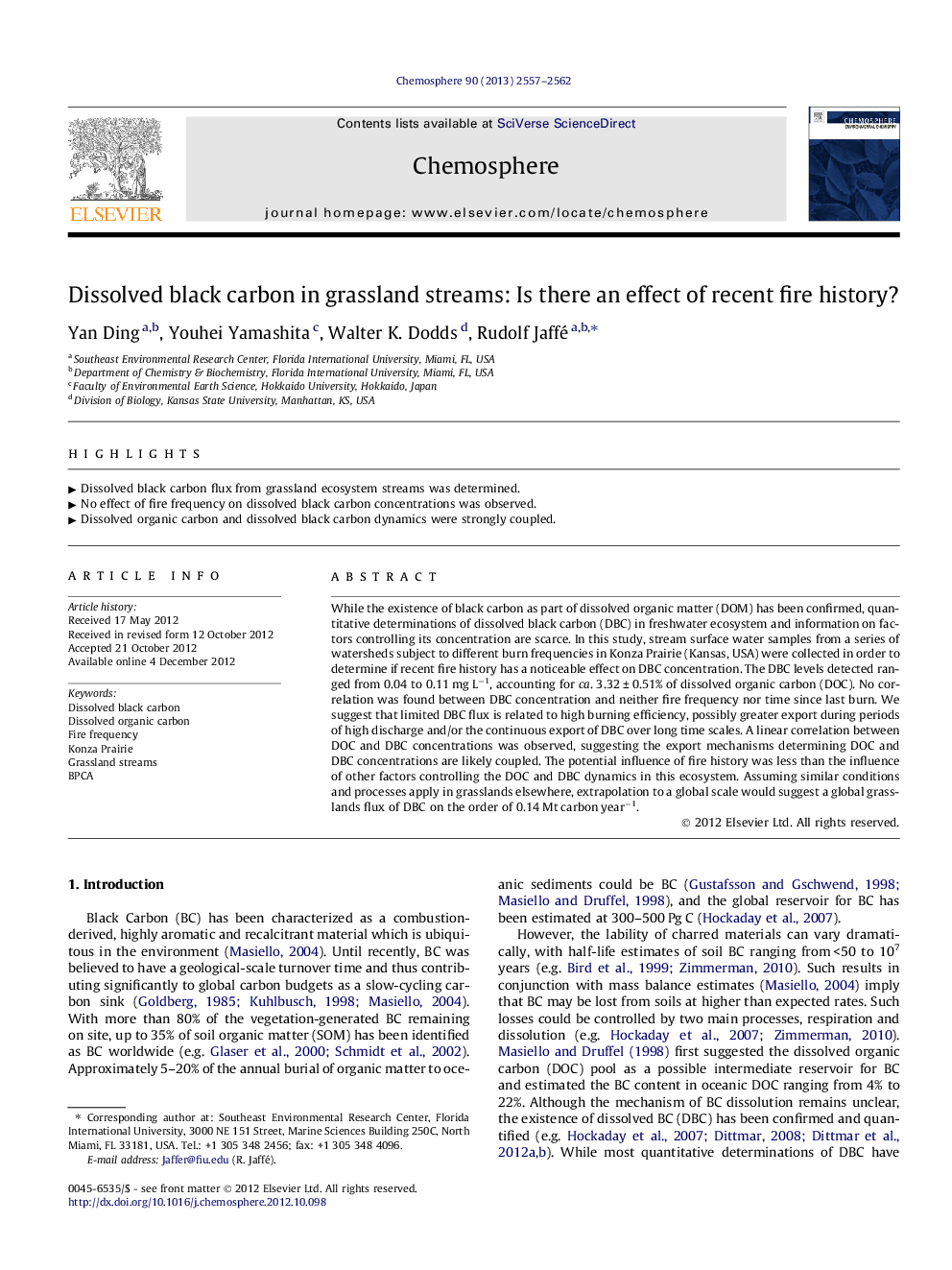| Article ID | Journal | Published Year | Pages | File Type |
|---|---|---|---|---|
| 4409561 | Chemosphere | 2013 | 6 Pages |
While the existence of black carbon as part of dissolved organic matter (DOM) has been confirmed, quantitative determinations of dissolved black carbon (DBC) in freshwater ecosystem and information on factors controlling its concentration are scarce. In this study, stream surface water samples from a series of watersheds subject to different burn frequencies in Konza Prairie (Kansas, USA) were collected in order to determine if recent fire history has a noticeable effect on DBC concentration. The DBC levels detected ranged from 0.04 to 0.11 mg L−1, accounting for ca. 3.32 ± 0.51% of dissolved organic carbon (DOC). No correlation was found between DBC concentration and neither fire frequency nor time since last burn. We suggest that limited DBC flux is related to high burning efficiency, possibly greater export during periods of high discharge and/or the continuous export of DBC over long time scales. A linear correlation between DOC and DBC concentrations was observed, suggesting the export mechanisms determining DOC and DBC concentrations are likely coupled. The potential influence of fire history was less than the influence of other factors controlling the DOC and DBC dynamics in this ecosystem. Assuming similar conditions and processes apply in grasslands elsewhere, extrapolation to a global scale would suggest a global grasslands flux of DBC on the order of 0.14 Mt carbon year−1.
► Dissolved black carbon flux from grassland ecosystem streams was determined. ► No effect of fire frequency on dissolved black carbon concentrations was observed. ► Dissolved organic carbon and dissolved black carbon dynamics were strongly coupled.
